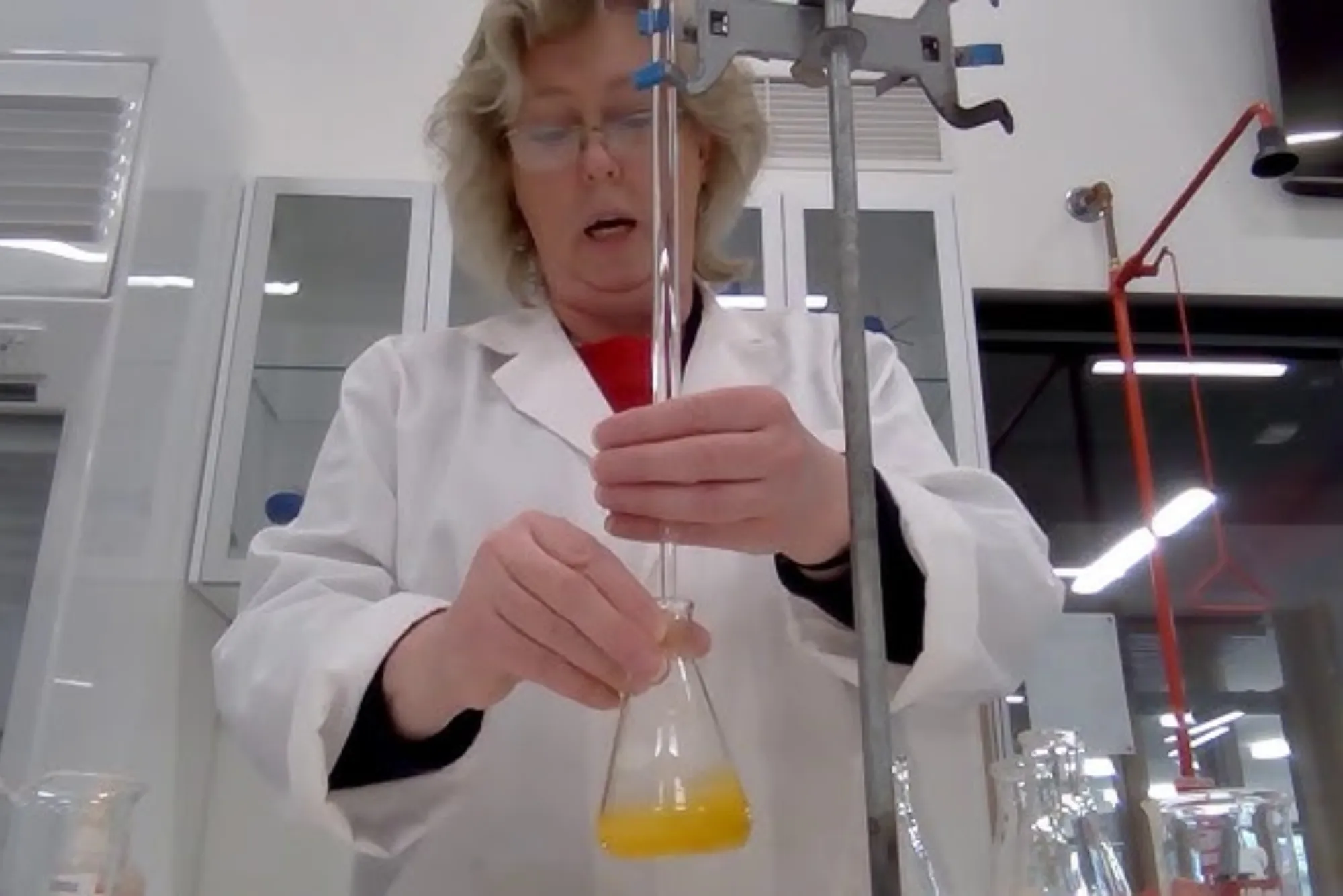Accurate solution preparation is essential for chemistry labs, industrial formulations, agriculture mixing, and manufacturing workflows. Today, many professionals rely on a solution concentration calculator to avoid errors and save time. With modern digital tools, even students and small labs in Pakistan, UAE, and Saudi Arabia can standardize results with confidence.
This guide provides expert-backed, practical strategies designed for laboratory workers, chemical engineers, agricultural technicians, and academic researchers. It also highlights regional initiatives that promote scientific digitalisation.
Understanding How a Solution Concentration Calculator Works
Quick Answer: It calculates the exact ratio of solute to solvent to achieve a desired concentration.
A solution concentration calculator simplifies the math behind molarity, molality, percent concentration, and dilution. Users enter the known values—such as stock concentration, desired concentration, and final volume—and the tool generates accurate measurements.
In regions like Punjab, Sindh, and the GCC science corridor, institutes increasingly rely on digital calculators to avoid manual calculation errors. According to UNESCO, up to 65% of lab mistakes come from formula miscalculations, making digital tools more essential than ever.
Why Precise Concentration Matters
Quick Answer: Because small mistakes can significantly affect experiments, product quality, and safety.
In chemical labs, incorrect concentration levels lead to failed experiments, reduced product performance, or safety hazards. Industries such as pharmaceuticals, water treatment, and agriculture require extremely tight tolerance ranges.
For example, GCC manufacturing sites follow stringent ISO standards, where a 1% deviation in chemical mixing can disrupt entire production batches. Precision is not optional—it’s foundational.
Step-by-Step Guide to Using a Solution Concentration Tool
Quick Answer: Gather inputs → enter values → verify units → compute → implement.
Follow these steps to ensure accuracy:
-
Identify the type of concentration you need (molar, percent, ppm, etc.).
-
Collect necessary data such as solute mass, stock concentration, and target volume.
-
Enter values carefully and confirm unit consistency.
-
Compute the exact dilution or mixing requirements.
-
Record results for reproducibility and audits.
This workflow aligns with modern lab SOPs used at research centers in Lahore, Riyadh, and Dubai.
Advanced Dilution Techniques for Professionals
Quick Answer: Use serial dilution, cross-check volumes, and validate through repeat measurements.
Advanced dilution strategies help scientists avoid cumulative errors. Techniques include:
-
Serial dilutions for microbiology or environmental analysis.
-
Reverse calculations to verify accuracy.
-
Temperature-adjusted calculations for solutions that expand or contract.
Many industrial labs now follow the “double-check protocol” adopted by chemical parks in Saudi Arabia’s NEOM and Pakistan’s Special Technology Zones Authority (STZA).
Using a Dilution Ratio Calculator in Real Applications
Quick Answer: It simplifies creating accurate ratios for chemicals, fertilizers, disinfectants, and more.
Around the midpoint of your article, here’s your first required backlink placed naturally:
Professionals working with chemical formulations often rely on a trusted dilution ratio calculator to avoid mixing errors in fertilizers, disinfectants, laboratory buffers, and industrial solutions.
Real-world use cases include:
-
Pesticide dilution for Punjab and Sindh agriculture
-
Disinfectant mixing for Dubai hospitals
-
Water treatment calibration in GCC municipalities
-
Lab buffer preparation in Saudi universities
These sectors value calculators that reduce guesswork and ensure reproducibility.
Benefits of Using Digital Calculator Platforms
Quick Answer: Digital tools reduce errors, save time, and offer standardized results.
A modern online calculator platform offers:
-
Automatic formula calculations
-
Cross-concentration conversions
-
Error-free scaling for large batches
-
Mobile access for field technicians
-
Cloud-based accuracy logs
These tools support the digital transformation goals promoted by the Pakistan Digital Agenda 2025 and UAE’s Smart Lab initiatives.
Choosing Your One-Stop Calculator Website Wisely
Quick Answer: Choose platforms offering accuracy, speed, variety, and cross-tool integration.
Today’s professionals prefer digital hubs that centralize all calculation tools. Many users across Karachi, Islamabad, Dubai, and Jeddah prefer using a your one-stop calculator website because it offers a complete suite of chemistry, physics, engineering, and general-use calculators in one place.
Ideal calculators should be:
-
Fast
-
User-friendly
-
Mobile responsive
-
Frequently updated
-
Reliable for academic & industrial use
Platforms with multi-tool integration support seamless workflows.
Role of Technology & Web Development in Scientific Calculations
Quick Answer: Modern web apps make scientific tools more accurate, interactive, and accessible.
Science calculators today run on advanced frameworks that ensure stability and speed. A trusted web development company can help build secure, scalable, and high-performance calculation tools used in labs and universities.
Many regional governments—such as Pakistan’s Ignite National Technology Fund and UAE’s Innovation Strategy—actively support digital science advancements. These programs encourage startups to build robust platforms that empower researchers, students, and technicians.
Expert Tips for Getting the Most Out of Concentration Calculators
Quick Answer: Cross-check values and maintain consistency in units and inputs.
Expert chemists often share these key recommendations:
-
Always double-check units (g/L, mg/mL, M, %).
-
Use calibrated measuring tools.
-
Run the calculation twice for high-risk solutions.
-
Save calibration logs for regulatory audits.
-
Adjust for temperature when required.
Expert Quote:
“Digital concentration tools reduce calculation errors by up to 90% when users follow consistent input protocols.”
— Dr. Mahir Al-Hassan, GCC Chemical Research Council
Regional Case Example: Pakistan & GCC Labs
Quick Answer: Digital tools are reshaping scientific workflows across the region.
In Pakistan, university labs in Lahore and Faisalabad increasingly rely on digital calculators to support chemistry and biotechnology programs. GCC labs—especially in Dubai and Riyadh—have adopted cloud-based calculation workflows to meet ISO and GxP standards.
Youth programs like Pakistan’s DigiSkills and UAE’s Youth Tech Champions encourage students to use digital tools for scientific problem-solving.
FAQs
1. What is the most accurate way to calculate a dilution?
Use a verified calculator, double-check your units, and follow serial dilution protocols.
2. Can I use these calculators for industrial chemical mixing?
Yes. Industries including cleaning products, agriculture, and manufacturing rely on them.
3. Are solution concentration calculators suitable for students?
Absolutely. They simplify complex formulas and reduce learning barriers.
4. How do I avoid mistakes when preparing molar solutions?
Use precise measurements, check units, and cross-verify results with a calculator.
5. What regions benefit most from digital scientific tools?
Pakistan, UAE, and Saudi Arabia are rapidly adopting digital lab technologies.
6. Do temperature changes affect solution concentration?
Yes. Some chemicals expand or contract, requiring temperature-adjusted calculations.
7. Are online calculators better than manual calculations?
For speed, accuracy, and reliability—yes. They significantly reduce human error.
Final Thought
As someone working closely with teams across Pakistan and the GCC, I’ve seen how digital tools transform laboratory efficiency. A reliable solution concentration calculator not only saves time but also strengthens scientific accuracy—a crucial need for developing nations advancing toward global competitiveness. With government-backed youth programs and growing digital adoption, the future of scientific calculation in our region looks promising. The combination of technology, practical tools, and expert training will continue empowering both students and professionals to work smarter and safer.




